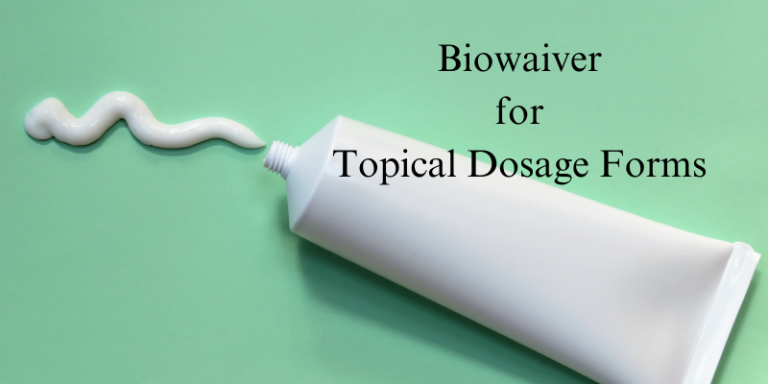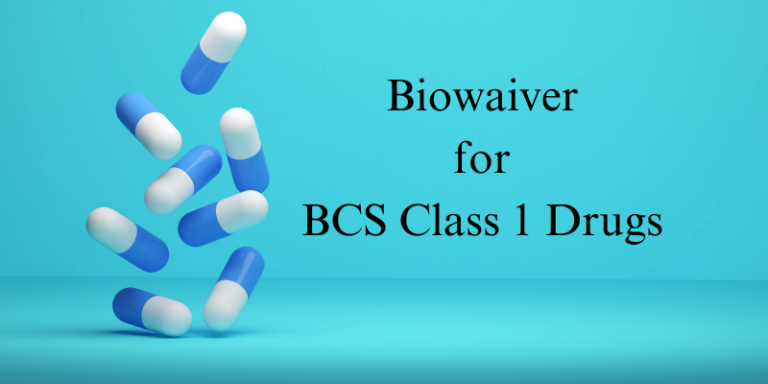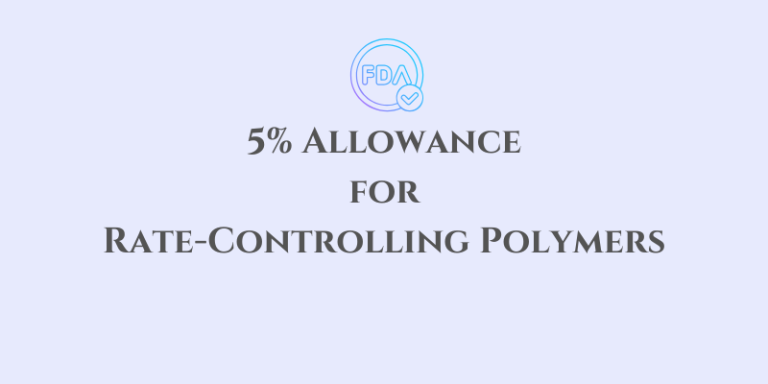SUPAC Guidance on Qualitative Changes in Excipients
SUPAC Guidance on Qualitative Changes
The USFDA SUPAC (Scale-Up and Post-Approval Changes) guidance categorizes formulation changes based on their impact on product performance. A qualitative change refers to the replacement or removal of an excipient, classified as a Level 3 change, which is considered major and requires regulatory approval.
Key Regulatory Requirements for Level 3 Changes:
- Comparative dissolution studies in multiple pH conditions (1.2, 4.5, and 6.8).
- In vivo BE study, unless an in vitro correlation justifies a waiver.
- Regulatory Filing: A Prior Approval Supplement (PAS) submission is required before implementation.
Application to Changing Disintegrants (CCS to CPV)
Since CPV and CCS have different mechanisms of action, this change is qualitative (Level 3) and may require a bioequivalence study unless a dissolution waiver (f2 > 50) is demonstrated. The impact should be assessed in terms of disintegration, dissolution, and bioavailability.
Scientific Justification for the Change
a) Functional Equivalence of Disintegrants
- Both CCS and CPV are super-disintegrants used in solid dosage forms.
- CCS swells, while CPV acts via capillary action, yet both promote rapid tablet disintegration.
b) Risk Assessment of Impact on Drug Performance
- DT: ensures no significant deviation.
- Dissolution Profile: Comparative studies will confirm similarity (f2 > 50).
- BE Impact: If the drug is BCS Class I or III, a BE waiver may be justified based on dissolution similarity.
Justification Based on SUPAC Guidance and Regulatory Precedents
a) SUPAC Guidance on Excipient Changes
- SUPAC-IR Guidance states that qualitative excipient changes require a PAS and potentially a BE study.
- A BE waiver is possible if dissolution similarity (f2 > 50) is demonstrated in pH 1.2, 4.5, and 6.8.
b) Justification for BE Waiver
To minimize regulatory burden, we will:
- Compare dissolution profiles in three media (pH 1.2, 4.5, and 6.8).
- Justify interchangeability based on scientific literature and prior cases.
- Apply bracketing for different strengths to ensure formulation consistency.
- Implementation and Regulatory Submission Strategy
a) Supporting Studies to Minimize BE Requirement
- Dissolution Profile Comparison (f2 test): If f2 > 50, a BE study may not be needed.
- Stability Studies: Conduct accelerated and long-term stability to confirm robustness.
b) Regulatory Filing Strategy
- If dissolution profiles match (f2 > 50) → Submit PAS with a BE waiver request.
- If dissolution is different, conduct a BE study before submission.
Conclusion
By demonstrating scientific rationale, dissolution similarity, and functional equivalence, the change from CCS to CPV can be justified under SUPAC Level 3 with a potential BE waiver. This approach ensures regulatory compliance while minimizing additional study requirements.
Read also:
- Biowaiver for BCS Class 1 Drugs
- Permeability and Biowaivers | A Key Factor in Regulatory Justification
Resource Person: Moinuddin syed. Ph.D, PMP®







